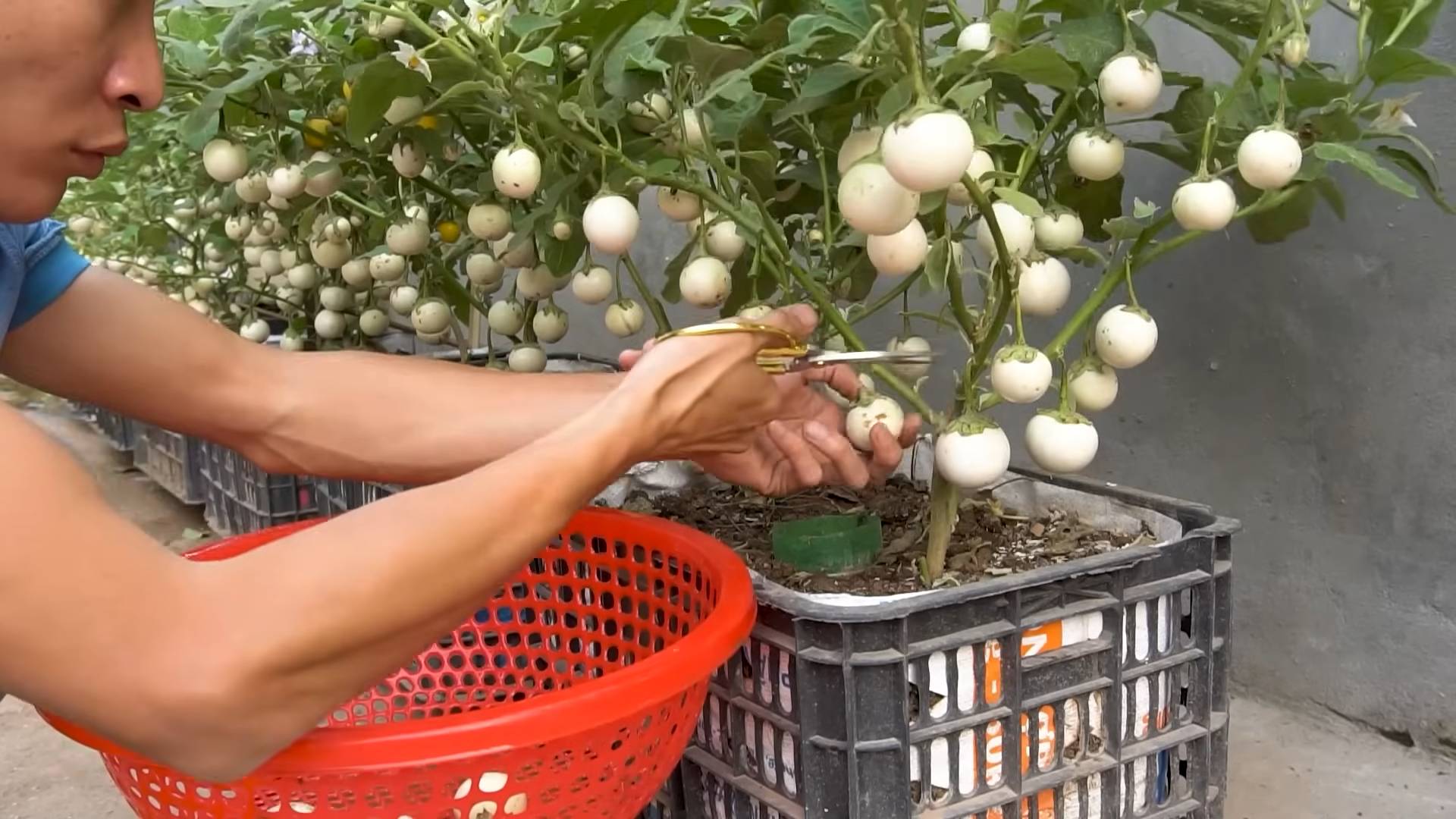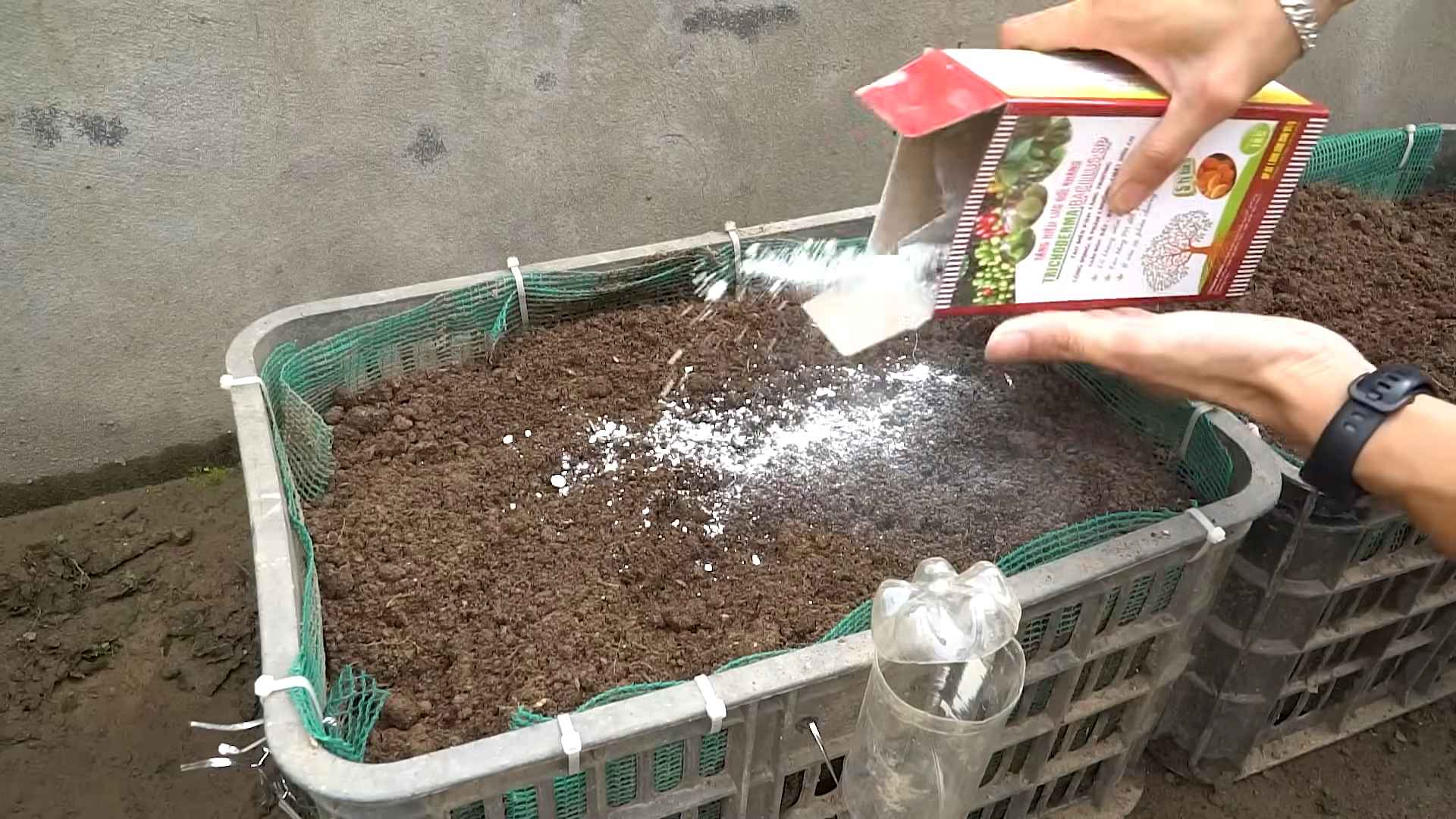Eggplant Gardening at Home: Dreaming of plump, glossy eggplants gracing your dinner table, all grown with your own two hands? You’re not alone! For centuries, gardeners around the world have cultivated this versatile vegetable, from its origins in ancient India to its adoption in Mediterranean cuisine and beyond. But let’s be honest, sometimes getting those picture-perfect eggplants feels more like a battle than a blissful gardening experience.
That’s where this DIY guide comes in! I’m going to share some of my favorite, tried-and-true tricks and hacks to help you master eggplant gardening at home, even if you’re a complete beginner. Forget complicated techniques and expensive equipment. We’re talking simple, effective solutions that will transform your eggplant patch from struggling to thriving.
Why do you need these DIY tricks? Because growing eggplants can be tricky! They’re susceptible to pests, diseases, and finicky weather. But with a little know-how, you can overcome these challenges and enjoy a bountiful harvest of delicious, homegrown eggplants. So, grab your gardening gloves, and let’s get started on your eggplant adventure!

Growing Eggplants Like a Pro: A DIY Guide for Home Gardeners
Hey there, fellow gardening enthusiasts! I’m so excited to share my secrets for growing plump, juicy eggplants right in your own backyard. Eggplants, with their glossy purple skin (or sometimes white, green, or even striped!), are a beautiful and delicious addition to any garden. Don’t be intimidated – with a little know-how, you can absolutely master eggplant cultivation. Let’s dive in!
Choosing Your Eggplant Variety
Before we get our hands dirty, let’s talk about eggplant varieties. There’s a whole world beyond the standard globe-shaped purple eggplant you see in the grocery store. Consider these factors when choosing:
* Climate: Some varieties are more heat-tolerant than others. If you live in a hot climate, look for varieties specifically bred for those conditions.
* Space: Eggplants can get fairly large, so consider how much space you have available. Bush varieties are a good option for smaller gardens or containers.
* Taste and Use: Do you prefer a mild, creamy eggplant or one with a bit more bite? Are you planning to grill them, bake them, or use them in a specific recipe?
Here are a few popular varieties to get you started:
* Black Beauty: The classic, reliable globe-shaped eggplant.
* Ichiban: A long, slender Japanese eggplant with delicate flavor.
* Rosa Bianca: A beautiful Italian heirloom with lavender and white stripes.
* Little Fingers: A compact variety perfect for containers, producing small, finger-like eggplants.
* White Egg: A unique variety that produces egg-shaped, white fruits.
Starting Your Eggplant Seeds (or Buying Seedlings)
You have two options here: starting your own seeds indoors or buying seedlings from a nursery. Starting from seed gives you more control over the variety and can save you money, but it requires a bit more effort.
Starting Seeds Indoors
I personally prefer starting my own seeds because I love watching them sprout and grow. Here’s how I do it:
1. Timing is Key: Eggplants need a long growing season, so start your seeds indoors 8-10 weeks before the last expected frost in your area.
2. Gather Your Supplies: You’ll need seed starting trays or small pots, seed starting mix (a light, sterile soil mix), a heat mat (optional, but helpful), and a grow light (also optional, but highly recommended).
3. Sow the Seeds: Fill your trays or pots with seed starting mix. Make a small indentation (about 1/4 inch deep) in the soil and place 2-3 seeds in each indentation. Cover the seeds lightly with soil and gently water.
4. Provide Warmth and Light: Place the trays or pots on a heat mat (if using) and under a grow light (if using). The ideal temperature for germination is around 80-85°F (27-29°C). If you don’t have a heat mat, find a warm spot in your house. If you don’t have a grow light, place the trays or pots near a sunny window, but be sure to rotate them regularly to prevent the seedlings from leaning towards the light.
5. Keep the Soil Moist: Water the soil regularly to keep it moist, but not soggy. Use a spray bottle to avoid disturbing the seeds.
6. Thin the Seedlings: Once the seedlings have emerged and have a few sets of true leaves (the leaves that look like miniature eggplant leaves), thin them out by snipping off the weaker seedlings at the soil line. Leave only one strong seedling per pot or cell.
7. Harden Off the Seedlings: About a week before you plan to transplant the seedlings outdoors, you’ll need to “harden them off.” This means gradually exposing them to outdoor conditions to help them adjust. Start by placing them outside in a sheltered spot for an hour or two each day, gradually increasing the amount of time they spend outdoors.
Buying Seedlings
If you’re short on time or don’t want to deal with starting seeds, buying seedlings from a nursery is a perfectly fine option. Just make sure to choose healthy-looking plants with sturdy stems and no signs of pests or diseases.
Preparing Your Garden Bed
Eggplants need well-drained soil that is rich in organic matter. Here’s how I prepare my garden bed:
1. Choose a Sunny Location: Eggplants need at least 6-8 hours of sunlight per day.
2. Amend the Soil: Dig in plenty of compost, aged manure, or other organic matter to improve the soil’s drainage and fertility. Eggplants are heavy feeders, so they need a nutrient-rich soil.
3. Check the Soil pH: Eggplants prefer a slightly acidic soil pH of 6.0-6.8. You can test your soil pH with a soil testing kit. If your soil is too alkaline, you can amend it with sulfur.
4. Consider Raised Beds: Raised beds are a great option for growing eggplants, especially if your soil is heavy clay or poorly drained.
Transplanting Your Eggplant Seedlings
Once the danger of frost has passed and the soil has warmed up, it’s time to transplant your eggplant seedlings into the garden.
1. Choose a Cloudy Day: Transplanting on a cloudy day will help prevent the seedlings from getting stressed.
2. Dig Holes: Dig holes that are slightly larger than the root balls of the seedlings. Space the holes about 24-36 inches apart, depending on the variety.
3. Gently Remove the Seedlings: Carefully remove the seedlings from their pots or trays, being careful not to damage the roots.
4. Plant the Seedlings: Place the seedlings in the holes and backfill with soil. Gently firm the soil around the base of the plants.
5. Water Thoroughly: Water the seedlings thoroughly after planting.
6. Mulch: Apply a layer of mulch around the plants to help retain moisture, suppress weeds, and regulate soil temperature. I like to use straw or shredded leaves.
7. Stake or Cage: Eggplants can get quite heavy with fruit, so it’s a good idea to stake or cage them to provide support. This will prevent the branches from breaking and keep the fruit off the ground.
Caring for Your Eggplants
Now that your eggplants are in the ground, it’s time to give them the care they need to thrive.
1. Water Regularly: Eggplants need consistent moisture, especially during hot, dry weather. Water deeply and regularly, aiming for about 1-2 inches of water per week. Avoid overhead watering, as this can promote fungal diseases.
2. Fertilize: As I mentioned, eggplants are heavy feeders. Fertilize them every 2-3 weeks with a balanced fertilizer or a fertilizer specifically formulated for vegetables. Follow the instructions on the fertilizer package.
3. Weed Regularly: Keep the garden bed free of weeds, as they can compete with the eggplants for nutrients and water.
4. Pest Control: Keep an eye out for common eggplant pests, such as flea beetles, aphids, and tomato hornworms. Handpick any pests you find or use an organic insecticide, such as neem oil or insecticidal soap.
5. Disease Prevention: Eggplants are susceptible to fungal diseases, such as early blight and verticillium wilt. To prevent these diseases, provide good air circulation, avoid overhead watering, and rotate your crops each year.
6. Pruning (Optional): Some gardeners like to prune their eggplants to improve air circulation and encourage fruit production. You can remove suckers (small shoots that grow from the base of the plant) and any yellowing or diseased leaves.
Harvesting Your Eggplants
The moment you’ve been waiting for! Knowing when to harvest your eggplants is key to getting the best flavor and texture.
1. Check for Size and Color: Eggplants are typically ready to harvest when they are about two-thirds of their mature size and have a glossy, vibrant color.
2. Test for Firmness: Gently press the skin of the eggplant. If it feels firm and slightly resistant, it’s ready to harvest. If it feels soft or mushy, it’s overripe.
3. Use a Sharp Knife or Pruning Shears: Cut the eggplant from the plant, leaving about an inch of stem attached.
4. Harvest Regularly: Harvesting eggplants regularly will encourage the plant to produce more fruit.
Troubleshooting Common Eggplant Problems
Even with the best care, you might encounter some problems along the way. Here are a few common issues and how to address them:
* Blossom End Rot: This is caused by a calcium deficiency and results in a dark, sunken spot on the bottom of the fruit. To prevent blossom end rot, make sure your soil is well-drained and that you’re providing

Conclusion
So, there you have it! Mastering eggplant gardening at home is not only achievable but also incredibly rewarding. We’ve explored the ins and outs of cultivating these beautiful, versatile vegetables right in your own backyard, from selecting the perfect variety to troubleshooting common problems. But why should you embark on this eggplant adventure?
Firstly, the taste. There’s simply no comparison between a store-bought eggplant and one you’ve nurtured yourself. The homegrown variety boasts a richer, more complex flavor, a tender texture, and a freshness that elevates any dish. Imagine biting into a perfectly grilled eggplant slice, still warm from the sun, knowing you grew it with your own two hands. That’s a satisfaction you can’t buy.
Secondly, control. When you grow your own eggplants, you have complete control over the growing process. You can choose organic methods, avoiding harmful pesticides and herbicides. You know exactly what’s going into your food, ensuring a healthier and safer meal for you and your family. This peace of mind is invaluable.
Thirdly, the sheer joy of gardening. There’s something deeply therapeutic about tending to a garden, watching your plants grow, and harvesting the fruits (or in this case, vegetables) of your labor. Eggplant gardening at home offers a connection to nature, a chance to de-stress, and a sense of accomplishment that’s hard to replicate.
But don’t stop there! Experiment with different eggplant varieties. Try growing the classic Black Beauty, the slender Japanese eggplant, or the vibrant Thai eggplant. Each variety offers a unique flavor and texture profile, allowing you to explore a world of culinary possibilities. Consider companion planting to enhance growth and deter pests. Basil, marigolds, and thyme are excellent choices for eggplant companions.
And if you’re feeling adventurous, try your hand at grafting. Grafting eggplant onto a more vigorous rootstock can significantly improve disease resistance and yield. It’s a more advanced technique, but the results can be truly impressive.
Eggplant gardening at home is more than just growing vegetables; it’s about connecting with nature, nourishing your body, and creating something beautiful and delicious. So, grab your gardening gloves, choose your favorite eggplant variety, and get started! We’re confident that you’ll be amazed by the results.
We encourage you to share your eggplant gardening experiences with us! Post photos of your thriving plants, share your favorite recipes, and let us know what challenges you’ve overcome. Your insights can help inspire and guide other gardeners on their own eggplant journeys. Let’s build a community of eggplant enthusiasts!
Frequently Asked Questions (FAQ)
What is the best time to start eggplant seeds indoors?
The ideal time to start eggplant seeds indoors is typically 6-8 weeks before the last expected frost in your area. This allows the seedlings to develop a strong root system before being transplanted outdoors. Check your local frost dates to determine the appropriate timing for your region. Starting them too early can result in leggy, weak seedlings, while starting them too late can delay your harvest.
How much sunlight do eggplants need?
Eggplants are sun-loving plants and require at least 6-8 hours of direct sunlight per day to thrive. Insufficient sunlight can lead to stunted growth, reduced fruit production, and a higher susceptibility to pests and diseases. Choose a location in your garden that receives ample sunlight throughout the day. If you live in a particularly hot climate, some afternoon shade may be beneficial to prevent sunscald on the fruits.
What kind of soil is best for growing eggplants?
Eggplants prefer well-drained, fertile soil that is rich in organic matter. The ideal soil pH is between 6.0 and 7.0. Before planting, amend your soil with compost, aged manure, or other organic materials to improve drainage, fertility, and water retention. Avoid heavy clay soils, as they can become waterlogged and inhibit root growth. A soil test can help you determine the pH and nutrient levels of your soil and guide you in making necessary amendments.
How often should I water my eggplants?
Eggplants need consistent moisture, especially during hot weather and fruit development. Water deeply and regularly, aiming to keep the soil consistently moist but not waterlogged. A good rule of thumb is to water when the top inch of soil feels dry to the touch. Mulching around the plants can help retain moisture and suppress weeds. Avoid overhead watering, as it can increase the risk of fungal diseases. Drip irrigation or soaker hoses are excellent options for delivering water directly to the roots.
What are some common pests and diseases that affect eggplants?
Eggplants are susceptible to several pests and diseases, including aphids, flea beetles, spider mites, blossom-end rot, and fungal diseases like verticillium wilt and fusarium wilt. Regularly inspect your plants for signs of pests or diseases. Use organic pest control methods, such as insecticidal soap or neem oil, to control infestations. Ensure good air circulation around the plants to prevent fungal diseases. Choose disease-resistant varieties whenever possible. Crop rotation can also help reduce the buildup of soilborne pathogens.
How do I prevent blossom-end rot on my eggplants?
Blossom-end rot is a common problem in eggplants, caused by a calcium deficiency. However, it’s often not a lack of calcium in the soil, but rather the plant’s inability to absorb it due to inconsistent watering. To prevent blossom-end rot, ensure consistent watering, especially during fruit development. Mulch around the plants to help retain moisture. You can also add calcium to the soil by incorporating bone meal or crushed eggshells. A foliar spray of calcium chloride can provide a quick boost of calcium to the plant.
When is the best time to harvest eggplants?
Eggplants are typically ready to harvest when they are firm, glossy, and have reached their mature size and color. The skin should be smooth and unblemished. Gently press the skin with your thumb; if it leaves a slight indentation, the eggplant is ripe. Use a sharp knife or pruning shears to cut the eggplant from the plant, leaving a short stem attached. Overripe eggplants can become bitter and seedy.
Can I grow eggplants in containers?
Yes, eggplants can be successfully grown in containers, making them a great option for gardeners with limited space. Choose a large container, at least 5 gallons in size, with good drainage holes. Use a high-quality potting mix that is well-draining and rich in organic matter. Provide adequate sunlight and water regularly. Container-grown eggplants may require more frequent fertilization than those grown in the ground.
What are some good companion plants for eggplants?
Companion planting can benefit eggplants by attracting beneficial insects, repelling pests, and improving soil health. Some good companion plants for eggplants include basil, marigolds, thyme, oregano, peppers, and beans. Avoid planting eggplants near fennel, as it can inhibit their growth.
How do I save seeds from my eggplants?
Saving seeds from your eggplants can be a rewarding way to preserve your favorite varieties and ensure a continuous supply of seeds for future plantings. Allow the eggplants to fully ripen on the plant until they become dull and slightly soft. Cut the eggplant open and scoop out the seeds. Rinse the seeds thoroughly to remove any pulp. Spread the seeds out on a paper towel to dry completely. Once dry, store the seeds in an airtight container in a cool, dark, and dry place. Be aware that seeds saved from hybrid varieties may not produce plants that are true to type.





Leave a Comment